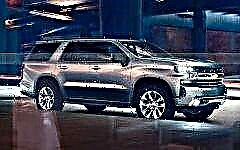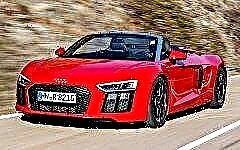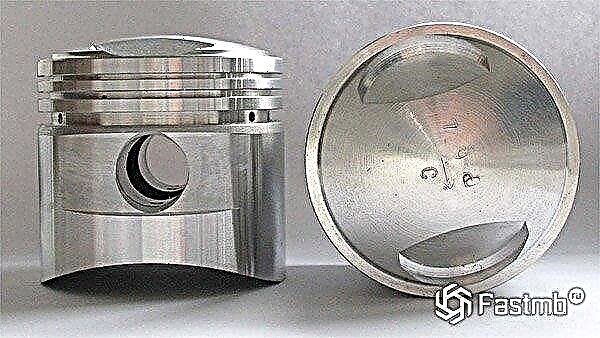In this article, we will consider the design feature of a car engine piston. What alloy they are made of, the composition and other features of the piston rings.

An engine piston is a cylindrical piece that reciprocates inside the cylinder. Piston:
- perceiving the gas pressure, transfers the resulting force to the connecting rod;
- seals the combustion chamber;
- removes excess heat from it.

The photo above shows the four strokes of the engine piston.
Extreme conditions dictate piston material
The piston is operated under extreme conditions, the characteristic features of which are high: pressure, inertial loads and temperatures. That is why the main requirements for materials for its manufacture include:
- high mechanical strength;
- good thermal conductivity;
- low density;
- insignificant coefficient of linear expansion, antifriction properties;
- good corrosion resistance.
The required parameters correspond to special aluminum alloys characterized by strength, heat resistance and lightness. Less commonly, gray cast irons and steel alloys are used in the manufacture of pistons.
Pistons can be:
- cast;
- forged.
In the first embodiment, they are made by injection molding. Forged ones are made by stamping from an aluminum alloy with a small addition of silicon (on average, about 15%), which significantly increases their strength and reduces the degree of piston expansion in the operating temperature range.
The design features of the piston are determined by its purpose

The main conditions that determine the design of the piston are the type of engine and the shape of the combustion chamber, the features of the combustion process taking place in it. Structurally, the piston is a one-piece element, consisting of:
- heads (bottoms);
- sealing part;
- skirts (guide part).

Is the piston of a gasoline engine different from a diesel one? The surfaces of the piston heads of gasoline and diesel engines are structurally different. In a gasoline engine, the head surface is flat or close to it. Sometimes grooves are made in it, contributing to the full opening of the valves. For the pistons of engines equipped with a direct fuel injection system (SNVT), a more complex shape is characteristic. The piston head in a diesel engine differs significantly from a gasoline one - due to the implementation of a combustion chamber in a given shape, better turbulence and mixture formation is ensured.

The photo shows a diagram of the engine piston.
Piston rings: types and composition

The sealing part of the piston includes piston rings that ensure a tight connection between the piston and the cylinder. The technical condition of the engine is determined by its sealing capacity. Depending on the type and purpose of the engine, the number of rings and their location are selected. The most common scheme is a scheme of two compression and one oil scraper rings. Piston rings are made mainly from special gray ductile iron, which has:
- high stable indicators of strength and elasticity at operating temperatures throughout the entire service life of the ring;
- high wear resistance under conditions of intense friction;
- good antifriction properties;
- the ability to quickly and efficiently run-in to the cylinder surface.
Thanks to alloying additions of chromium, molybdenum, nickel and tungsten, the heat resistance of the rings is significantly increased. By applying special coatings of porous chromium and molybdenum, tinning or phosphating the working surfaces of the rings, they improve their running-in behavior, increase wear resistance and corrosion protection.
The main purpose of the compression ring is to prevent gases from the combustion chamber from entering the engine crankcase. Particularly heavy loads are applied to the first compression ring. Therefore, in the manufacture of rings for pistons of some high-powered gasoline and all diesel engines, a steel insert is installed, which increases the strength of the rings and allows you to ensure the maximum compression ratio. In shape, compression rings can be:
- trapezoidal;
- cephalic;
- tconic.
When making some rings, a cut (cut) is made.
The oil scraper ring is responsible for removing excess oil from the cylinder walls and preventing it from entering the combustion chamber. It is distinguished by the presence of many drainage holes. Some rings are designed with spring expanders.
The shape of the guiding part of the piston (otherwise, the skirt) can be tapered or barrel-shaped, which makes it possible to compensate for its expansion when reaching high operating temperatures. Under their influence, the shape of the piston becomes cylindrical. In order to reduce frictional losses, the side surface of the piston is covered with a layer of antifriction material; for this purpose, graphite or molybdenum disulfide is used. The bore holes in the piston skirt are used to secure the piston pin.
The composition of the piston group

A unit consisting of a piston, compression rings, oil scraper rings, and a piston pin is usually called a piston group. The function of its connection with the connecting rod is assigned to a steel piston pin, which has a tubular shape. Requirements are imposed on it:
- minimal deformation during operation;
- high strength under variable load and wear resistance;
- good shock resistance;
- low weight.
According to the installation method, the piston pins can be:
- are fixed in the piston bosses, but rotate in the connecting rod head;
- are fixed in the head of the connecting rod and rotate in the piston bosses;
- freely rotating in the piston bosses and in the connecting rod head.

The fingers installed according to the third option are called floating. They are the most popular because of their slight and even wear along the length and circumference. By using them, the risk of galling is minimized. In addition, they are easy to install.
Removing excess heat from the piston
In addition to significant mechanical stresses, the piston is also negatively affected by extremely high temperatures. Heat is removed from the piston group:
- cooling system from the cylinder walls;
- the inner cavity of the piston, then - the piston pin and connecting rod, as well as oil circulating in the lubrication system;
- partially cold air-fuel mixture supplied to the cylinders.
From the inner surface of the piston, its cooling is carried out using:
- splashing oil through a special nozzle or hole in the connecting rod;
- oil mist in the cylinder cavity;
- injecting oil into the ring zone, into a special channel;
- oil circulation in the piston head through the tubular coil.











